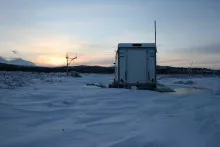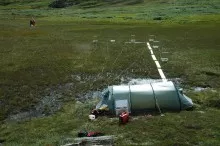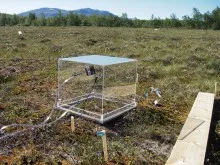Biogeochemistry
Terrestrial ecosystems at high latitudes will see significant climate change within coming decades. This will have significant impacts on many characteristics of natural ecosystems such as those associated with the presence/absence of permafrost.
Climate and ecosystems at northern latitudes
Northern land areas are influencing and interacting in many ways with the climate system. Snow cover and the associated effects of albedo is an obvious component of these interactions where also the vegetation composition and the position of the tree-line play an important role. The carbon cycle of these natural ecosystems has also attracted an increasing amount of attention during recent years.
Emphasis on greenhouse gases
Particular emphasis has been on measuring land-atmosphere exchanges of trace gases such as CO2 and CH4. These greenhouse gases have in their land-atmosphere exchanges the potential for strongly influencing the further development of climate. However, if the carbon and greenhouse gas budgets of the northern landscape as a whole are to be studied the immediate atmospheric exchanges are only one part of the story. Lateral transport of dissolved organic carbon and sedimentation in lakes are factors that also are important for full budgeting.
Biogeochemistry and permafrost dynamics
In our research into biogeochemistry and permafrost dynamics of northern ecosystems at the department, we are concerned with all aspects of these interactions. From process studies of controlling factors on methane emissions over plot scale field measurements and monitoring of trace gas exchanges to landscape scale flux measurements and upscaling to catchment and regional scales. A particular emphasis is on permafrost dynamics and how melting permafrost throughout the Arctic are affecting ecosystem functioning in the form of greenhouse gas exchanges.
Field research in Scandinavia and Greenland
We are working extensively in the field in Scandinavia and Greenland but we also have novel controlled environment facilities in the laboratory in Lund where we can simulate permafrost conditions and work on details of how the climate and vegetation structure are interacting with greenhouse gas exchanges.
Contact information
Professor, Department of Physical Geography and Ecosystem Science




